Five years ago, I hadn’t heard of most of the ingredients I cook and bake with today. Millet? Teff? Sorghum? Quinoa? I doubt I’d ever tasted any of them. Five years ago, I was sick. The food I was consuming—mostly wheat-based—was slowly wearing me down, deadening my usual vibrancy and enthusiasm for life and replacing it with unexplainable mood swings, tears, and deep, deep fatigue. Five years ago, I didn’t know that I had celiac disease.
May is celiac awareness month: a time when those of us living with celiac are encouraged to share our personal stories, and a time when those who aren’t affected by the disease are invited to be open to hearing these stories, and perhaps to raising their knowledge and awareness.
A month or so ago, Connected in Motion’s Virtue Bajurny asked if I would write a guest post here on the CIM blog for Celiac Awareness Month. Given that Connected in Motion is an organization centred around living a full life with type 1 diabetes, you may be wondering: why this foray into the realm of celiac?
Like type 1 diabetes, celiac is an autoimmune disease. Autoimmune diseases tend to cluster, which means that celiac and type 1 diabetes are often linked. In terms of the general population, Health Canada tells us that “It is estimated that it [celiac] affects as many as 1 in every 100 – 200 people in North America”—that’s between 1% and 0.5% of the general population. When type 1 diabetes is part of the equation, however, these numbers change significantly. The Canadian Diabetes Association states that celiac, “…appears to be more common in people with type 1 diabetes than in the general population. Celiac disease is found in 4 to 9% of children with type 1 diabetes.”
I happen to part of this “double-whammy” minority. As a person with celiac, my body doesn’t recognize the protein that is found in certain grains as nourishment. Instead, it thinks this protein (called gluten) is an imposter. Gluten is found in wheat, barley, rye, and derivatives thereof. If I consume even a micro-amount of gluten, my body sends out waves of antibodies to attack this perceived enemy. The result? Damage to my entire intestinal tract—damage that can cause long-term health problems and a lot of pain.
I’ve written in detail about my celiac diagnosis at my patient health blog, My Favourite Number. I haven’t updated my blog in a long while, but I do keep my stories accessible there. I want people to be able to stumble upon them and perhaps take something positive away. I would encourage you to read my celiac story. It took courage and strength to write, and I think it is an important story to be heard. With this post, however, I hope to raise awareness about this disease by telling you about my life now, my life five years after diagnosis, and how it’s full in ways that I’d never imagined.
Learning that I had celiac, and could treat this new disease by avoiding gluten and eating well, was, without a doubt, a watershed moment in my life. After only a few months of being gluten-free, a strength and vibrancy that I hadn’t known for years—that I’d almost forgotten I’d ever known—returned to my being. That insidious fog of depression, frustration, physical pain, and bone-tired exhaustion that had slowly and stealthily enveloped me had finally lifted, and I felt like myself again.
With this newfound energy and outlook, I started to re-embrace life. And this embrace included delving unrestrained into my new diet—the new flavours, smells, and textures, and the new chemistry of gluten-free baking:
The smell of whole-grain muffins finishing in the oven, the dough a diverse mixture of high-fibre flours like teff, sorghum, soy, oat, and brown rice, kissed with the sweet and earthy flavours of fresh lavender and rosemary.
The warmth of steam rising from fresh-baked millet biscuits as I gently break them apart; the inside pale yellow, and becoming more yellow as I spread across a scoop of butter which quickly melts off the knife.
The chatter of a half dozen people, gathered in a friend’s kitchen, forks clinking against plates as we happily indulge in the gluten-free chocolate bundt cake I’d baked earlier that day. The cake dense with the goodness of chocolate, coffee, and sour cream.
If it weren’t for celiac, I wouldn’t have known any of these moments. I would never have thought to play and experiment with, for example, chickpea flour in pizza dough or whole-grain teff porridge.
I also wouldn’t be telling the truth if I didn’t acknowledge the period of mourning I went through after my diagnosis—mourning for the life and the way of eating to which I had become accustomed. It was a strange feeling to purge my kitchen after being diagnosed with celiac: my wooden spoons, baking pans, toaster, and cutting boards all went to Value Village; my large bag of whole wheat bread flour went to a friend who likes to bake; and all manner of half-eaten packages of cereal, crackers, and bread were removed from the house.
But, as I’ve found with many things in life, what starts out as a challenge, an obstacle, can often become a source of strength, learning, and unimagined opportunity. As Leonard Cohen sings, “There is a crack in everything. That’s how the light gets in.” With more energy that I’d had in years, and a whole world of new foods and new experiences ahead of me, the mourning for my “before celiac” life and diet didn’t last long.
I recently heard an interview with Stephen Levine in which he said, “There is a gift in illness. Although I wouldn’t wish illness on anyone, I would wish the ability to take illness as a teaching on everyone.” One of the greatest gifts that celiac has given me is a deeper connection and appreciation for the food I consume: a deeper sense of the importance of food as nourishment—nourishment for the body, of course, but also for the mind and spirit. The depression, anxiety, and fear of undiagnosed celiac taught me this connection.
Since undiagnosed celiac is extremely common, I feel I wouldn’t be doing my due diligence to celiac awareness month if I didn’t encourage each of you reading to check in with yourself, listen to your body, and ask whether gluten might be making you sick. Celiac is one of the most common chronic diseases in the world. It’s been estimated that as many as 300,000 Canadians could have celiac; however, many of these people are undiagnosed. Part of the reason for this is that celiac is defined by a wide-ranging litany of symptoms. Like a grab bag of combinations, these symptoms present themselves differently in different people. It rarely looks the same twice, and symptoms can be easily attributed to other causes.
My diagnosis changed my life for the better. And I would wish the same for anyone who may be struggling through the digestive unrest and any other symptoms of undiagnosed celiac.
As I’ve written before, food isn’t the only element that shapes me but it certainly plays a significant role. This isn’t just because diabetes and celiac force me to analyze every single bit of sustenance I consume. No, it’s much bigger than that. The incessant label-reading, measuring, and counting that come with diabetes/celiac are secondary to the fact that food brings me pleasure.
Harvesting big, floppy, vibrant green leaves of chard from my balcony garden, rubbing my hands in my thyme plant and breathing in that heady, flavourful aroma, mixing up a new batch of nutritious and soft-to-the-touch whole-grain gluten-free flour mix: having celiac has taught me to appreciate these things at a deeper level than I would have previously considered.
Food fills me with love. Cooking and sharing meals with the people I care for is one of my favourite things. By avoiding gluten, I know that the food I consume nourishes and sustains me; among other things, this gives me the energy I need to share my story.
Those of you familiar with Connected in Motion will know about its Slipstream weekends—a time for adults with type 1 diabetes to come together in community, to share the burden of living day-in and day-out with diabetes, and to feel empowered to dream big and push ourselves outside our comfort zones to see what magic we might find. Through this story, I hope I can instill some of that same empowering slipstream energy to those of us who live not only with type 1, but also with celiac disease.
Thank you for asking me to write here.
——————————————————————–
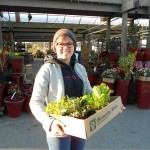
Laura Brandes is a writer, editor, and communicator with a passion for the world around her. She has researched and written about a range of environmental and conservation issues, and is also a patient health advocate: she was diagnosed with type 1 diabetes in 1993 and celiac in 2009. Laura lives in Esquimalt with her husband and her cat. She can often be found cycling, shopping at local farmers’ markets, and baking delicious gluten-free treats.

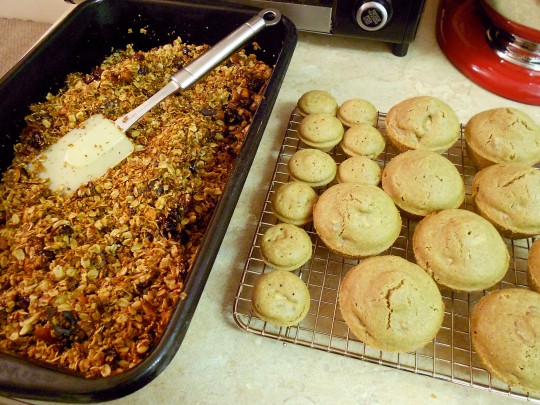
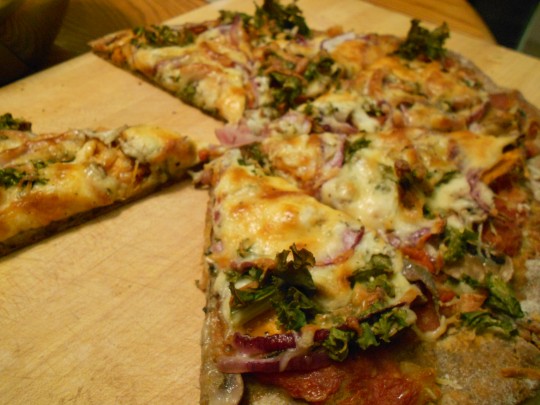
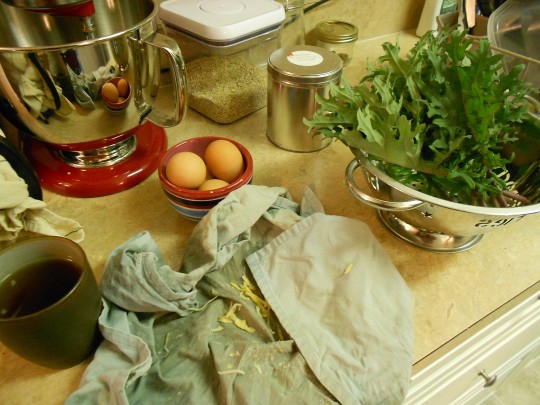
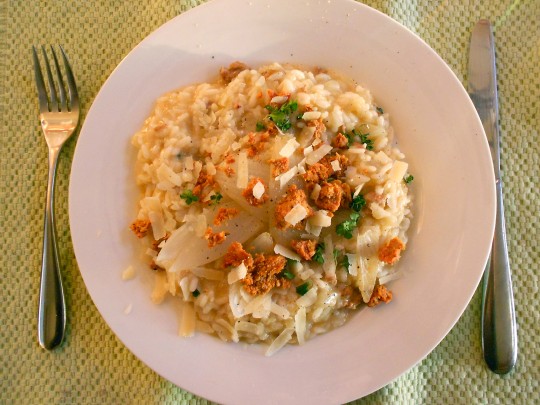




Love this post, Laura! THANK YOU!
You are welcome. Thank you so much for the opportunity to share my words and photos!
You are such a gift Laura! Just so you know, it is so nice to have someone
else out there that reads every single label and analyzes food like I do. I have found this part of my life to be one of the things that I love the most about myself and my family, but also just exhausting never being able to turn it off. It is in every moment of my day. So, that said, I am not celiac. I am not diabetic. I am just concious of my world and what goes in my body. It is that conciousness that I think we both appreciate so much. Thanks for the dialogue!
Thank you, Jodie. Yes, that consciousness of our world and of our bodies is so important — and so easy to overlook. Food is such an important part of that equation.
I love, love, love your desciptions of the food. We recently started the celiac journey with our six-year-old T1 son. And some of the passion I have for food has been lacking navigating these gluten-free waters. This post makes me want to run home and start cooking.
Oh, Lisa, I’m thrilled to hear that! Yes, just dive in. If some of your recipes are flops, who cares?! It’s all part of the learning process. You’ll certainly find some incredible flavours (or, at the very least, some good laughs) along the way.
Laura, I have told you before, but I will tell you again – I feel blessed to have you as a part of my life. You are a truly remarkable young woman, and I love you will all my heart! Wonderful, wonderful article!
Patti
Patti. Thank you. So much love right back atcha.
Thank you Laura. This is beautiful and inspiring. I am so proud of you.